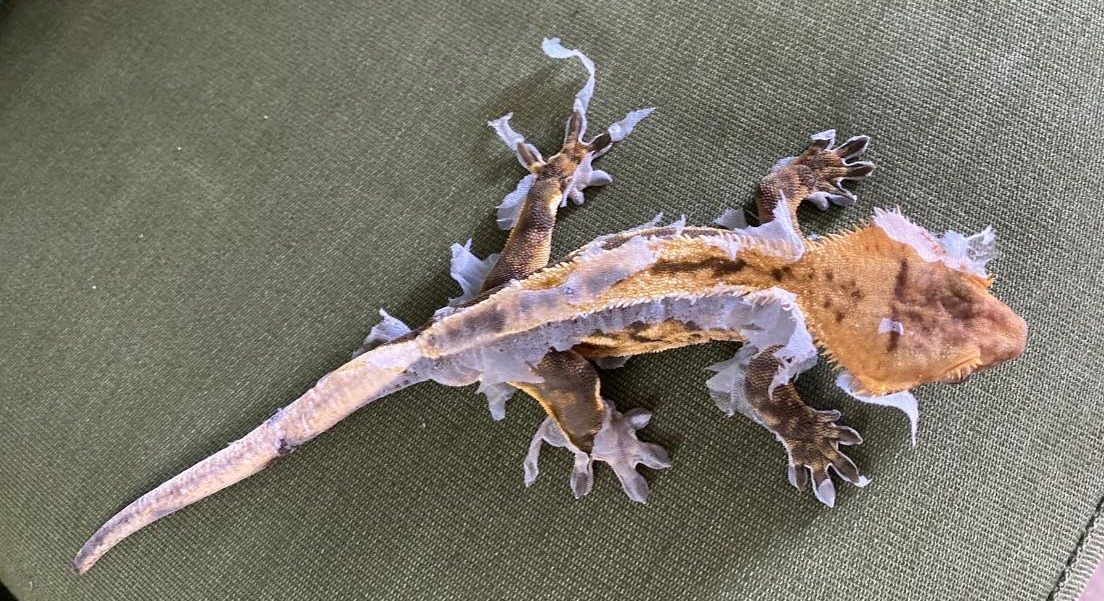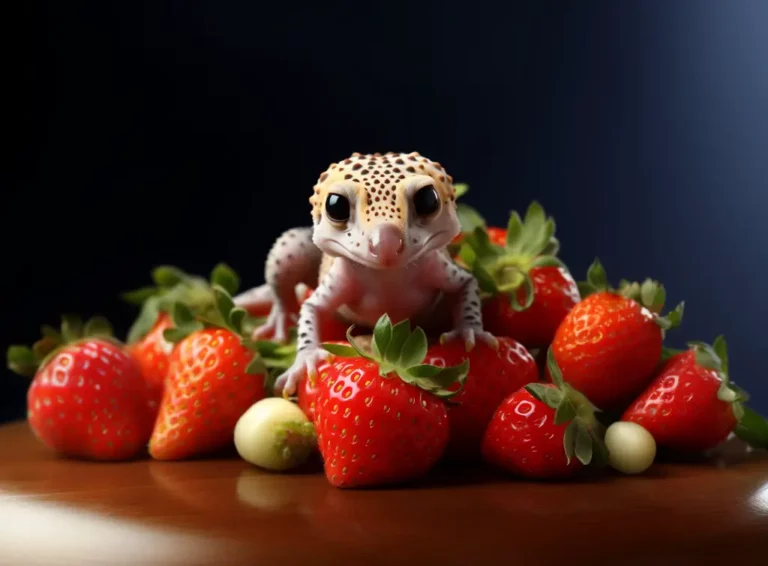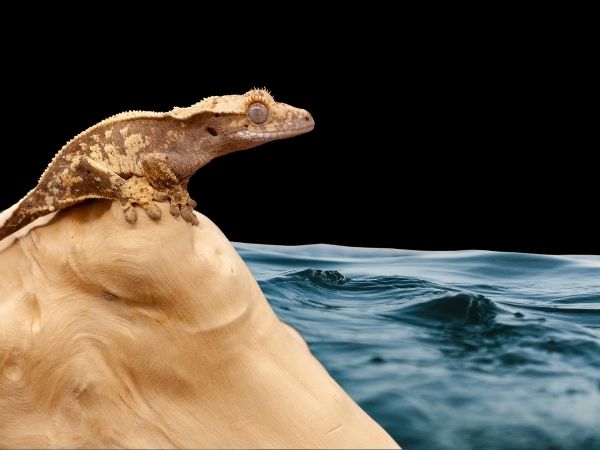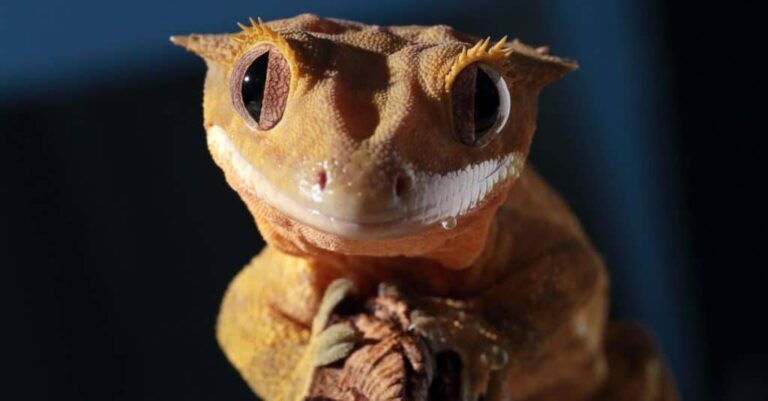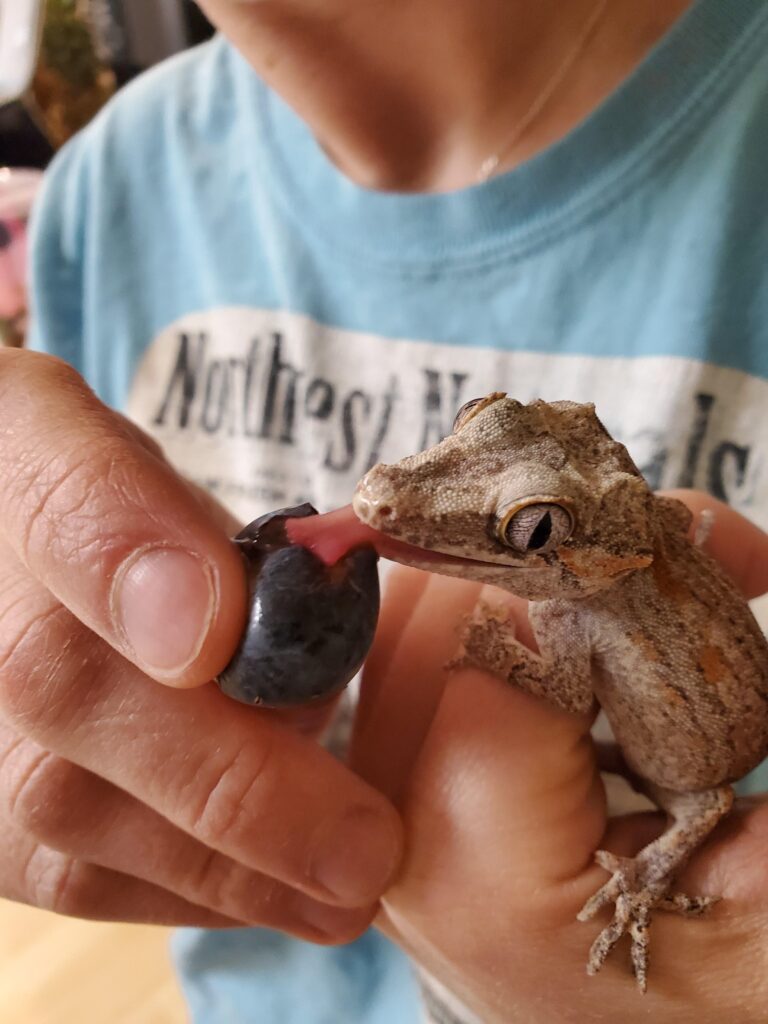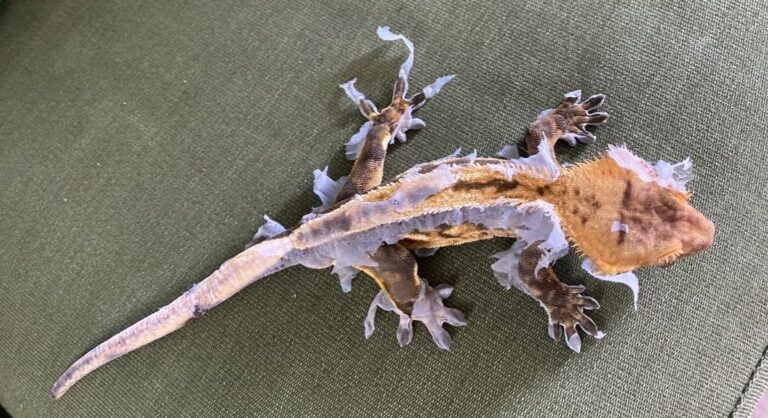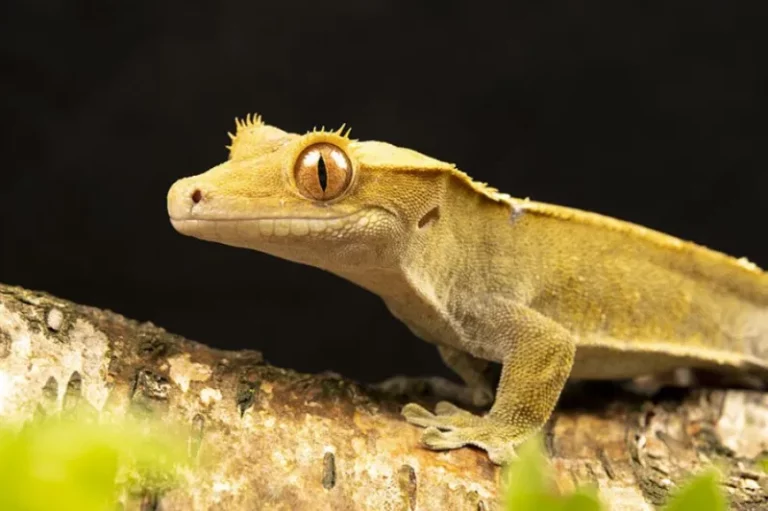Why Is My Crested Gecko Pale? Unveiling the Causes Behind Skin Discoloration
As I peered into the glass enclosure that housed my cherished pet, Spike, a sense of unease washed over me. The once-vibrant, speckled skin that had always adorned him had now lost its brilliance, leaving him in a pallid and listless state. A wave of apprehension coursed through me, accompanied by the perplexing question: “Why has my leopard gecko turned pale?”
Should you ever find yourself confronted with a similar enigma, take solace in knowing that there are explanations.
A crested gecko appearing pale often hints at a forthcoming shedding of their skin, akin to changing one’s attire. However, this transformation can sometimes signify more than just a routine molt. It may be an indicator of dehydration, stress, preparations for breeding, or even underlying health issues such as infections, complications during shedding, or problems with temperature regulation.
Join me on this journey into the captivating world of these reptilian companions as we unravel the mysteries behind their abrupt shifts in complexion. Together, we shall embark on a quest to reignite the radiant vibrancy of your leopard gecko, restoring its natural allure and well-being.
Why Crested Geckos Look So Pale: Top Reason
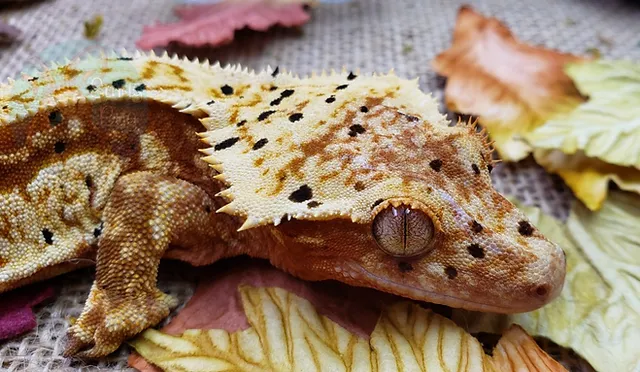
Age-Related Color Change:
Crested geckos start their lives with vibrant orange or red hues, but their adult colors remain shrouded in mystery during their early months. It’s a gradual process, taking several months to unveil their final, definitive color palette.
By the time they celebrate their first birthday, their adult colors are firmly established, often strikingly different from their hatchling appearance. Even their patterns evolve, with hatchlings displaying minimal markings that become more pronounced as they mature.
Environmental Color Change:
Remarkably, adult crested geckos retain the ability to alter their coloration through a phenomenon known as “firing up.” Various environmental conditions can trigger this change, some of which you can influence.
Notably, higher humidity levels, typically around 70 percent, can induce firing up, often occurring during the night or morning. Elevated temperatures, around 80°F, also play a role, though prolonged exposure above 85 °F can lead to overheating.
Further, Low-light conditions at night often cause them to fire up, possibly as a protective response against predators. Activity levels, too, influence their color, with increased nocturnal activity resulting in darker hues. These factors often intertwine, making it challenging to pinpoint a specific trigger for color change. Make sure they have access to appropriate UVB lighting to help with their calcium absorption and overall health.
Mood-Related Color Change:
In addition, they are not just influenced by their environment; their mood can also dictate their coloration. Stress, fear, and aggressive behaviors can prompt them to fire up. Such emotional states may arise from changes in their surroundings, the stress of shipping or handling, unfavorable living conditions, overcrowding, or even breeding-related stress. These mood-related color shifts serve as visual indicators of their emotional state.
Color Change Due to Shedding:
Much like other reptiles, they periodically shed their old skin to reveal fresh, new layers beneath. This process begins a few days before shedding, during which time you may notice them appearing grayer or even pale. It’s a natural and essential aspect of their growth and maintenance.
Illness or Parasites:
Pale coloration can sometimes be a sign of underlying health issues or parasitic infections. If your pet’s paleness is accompanied by other symptoms like lethargy, loss of appetite, or changes in stool consistency, it’s essential to consult a reptile veterinarian for a thorough examination.
Diet:
Diet plays a crucial role in the health and coloration of crested geckos. Ensure they are being fed a balanced diet consisting of high-quality commercial crested gecko food, insects, and fruit. Proper nutrition can help maintain their vibrant coloration.
Hydration:
Dehydration can affect appearance. Make sure they have access to clean, fresh water at all times. You can also provide occasional misting to increase
Breeding Season:
During the breeding season, males often exhibit more vibrant colors to attract females. They may fire up and display intensified colors to signal their readiness to breed.
Sleeping vs. Active State:
Also, they are primarily nocturnal, and they may appear paler when they are in their resting or sleeping state during the day. When they become active at night, they may fire up and display darker colors.
Genetic Variation:
Each one has a unique genetic makeup, and this can influence their baseline coloration and pattern. Some individuals may naturally have more intense colors than others.
Ensuring the Health of Your Crested Gecko: Essential Guidelines
Establish a Natural Day-Night Cycle:
- While crested geckos may not rely heavily on UV light, they still benefit from a natural day-night cycle to regulate their circadian rhythms. Ensure they experience both light and darkness for their overall well-being.
Temperature Maintenance:
- Maintain the proper temperature range of 71 to 82 °F, with a gradient from cooler to warmer areas within the enclosure. A suitable temperature range and gradient are vital for their comfort and health.
Optimal Humidity Levels:
- They originate from tropical environments and thrive in humid conditions. Maintain humidity levels between 55% and 80% within their habitat. Proper humidity is crucial for healthy shedding, and you can achieve this through misting and providing a moist hide.
Provide a Moist Hide:
- A moist hide within the enclosure promotes healthy shedding. This refuge should be consistently humid, allowing it to comfortably shed its skin when needed.
Balanced Diet:
- Offer a balanced diet comprising both fruit and insects. You can provide a powdered diet by adding water, ensuring your gecko receives the necessary fruit nutrients. Additionally, offer appropriately sized feeder insects, such as crickets and dubia roaches, to diversify their diet.
Supplement with Vitamins and Minerals:
- Despite a well-rounded diet, your pet may require additional calcium and essential vitamins. Dust or gut-load feeder insects to boost their nutritional intake.
Recognizing and Responding to Dangerous Color Changes in Crested Geckos
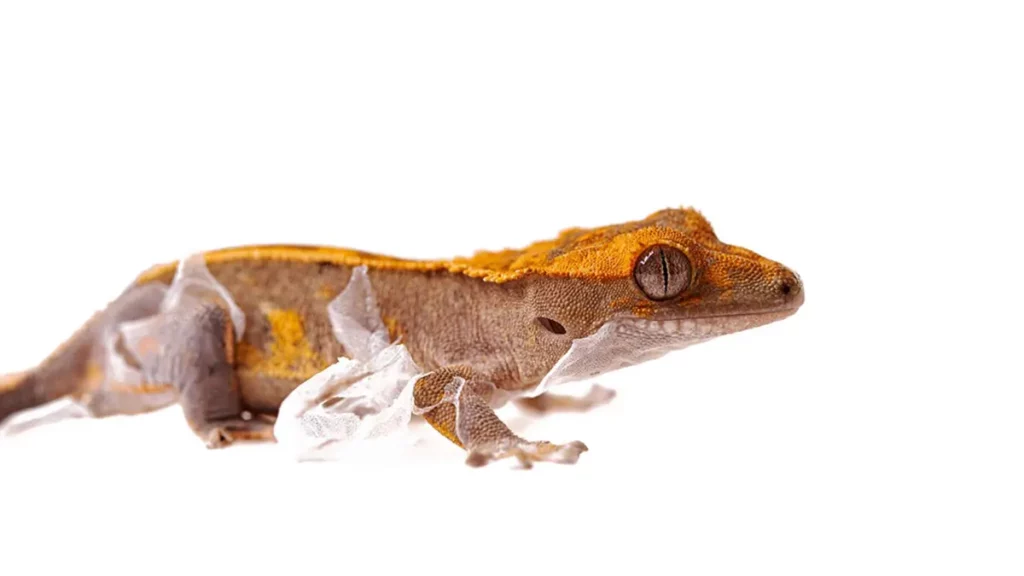
1. Dark Coloration Limited to Tail or Toes:
They typically don’t exhibit an entirely black hue when they fire up. However, if you observe that only the tail or toes have turned black, this can signify necrosis, often resulting from incomplete shedding. Immediate veterinary attention is crucial to address this issue.
2. Unexpected Spots on the Body:
While geckos with Dalmatian patterns naturally have spots, the sudden appearance of spots on an individual that previously didn’t have them can be cause for concern. It might indicate a fungal or bacterial infection. In such cases, prompt veterinary treatment is essential.
What to Do When the Tail or Toes Turn Black?
When you notice black coloration in the tail or toes of your crested gecko, it’s a clear indication of potential necrosis, which can be painful and harmful. Do not delay—immediately consult a veterinarian who specializes in reptile care. They can assess the extent of the issue and provide the necessary treatment to alleviate discomfort and prevent further complications.
What to Do When You Notice Spots on the Body?
Spots on a crested gecko’s body, especially when they appear suddenly and the gecko didn’t previously exhibit a spotted pattern, can be indicative of a fungal or bacterial infection. These infections require professional attention. Arrange a visit to your veterinarian so they can diagnose the issue, prescribe appropriate medication, and guide you in providing proper care.
FAQs
Q1: Why is my gecko’s skin pale?
A1: Pale skin in geckos is often a sign of the shedding process, where they’re preparing to molt and replace their old skin with a new one.
Q2: How do I know if my crested gecko is unhealthy?
A2: Signs of an unhealthy crested gecko may include lethargy, loss of appetite, changes in stool quality, and unusual behavior. Regular vet check-ups are essential for monitoring their health.
Q3: What does a healthy crested gecko look like?
A3: A healthy crested gecko typically has bright, vibrant skin, clear eyes, a well-proportioned body, and is active during the night.
Q4: Why is my house gecko turning white?
A4: House geckos, like other reptiles, can turn white during shedding. This process is entirely natural and helps them replace their old skin with a fresh layer.
Q5: Why is my gecko pale and not eating?
A5: A pale gecko that’s not eating could be stressed, sick, or experiencing shedding difficulties. It’s crucial to address the underlying issue and consult a veterinarian if necessary.
Q6: What is a healthy gecko skin?
A6: A healthy gecko skin is typically vibrant and free from irregularities like sores or discoloration. During shedding, their skin may appear paler as they prepare for molting.
Final Words
In conclusion, my inquiry into the reasons behind my crested gecko’s paleness has led me to a vital revelation – it is often an integral part of their natural shedding process. During this shedding phase, providing them with the appropriate conditions, including a humid hide and optimal humidity levels, while minimizing handling, is paramount to support a successful molt.
Nonetheless, it is crucial to remain vigilant. If the paleness persists beyond the shedding period or is accompanied by worrisome changes in behavior or appearance, diligent monitoring for potential health issues becomes imperative.
To uphold the well-being of my cherished pet, I remain committed to the diligent maintenance of a healthy diet, ensuring the enclosure’s proper conditions, and cultivating a stress-free environment. This proactive approach is the key to preserving my gecko’s vibrancy and ensuring its continued flourishing.

